GRAY is pleased to announce McArthur Binion & Jules Allen: Me and You, a two-person exhibition featuring eleven new paintings by McArthur Binion and a survey of gelatin silver prints by New York-based photographer Jules Allen. The exhibition will be on view Apr 12 - May 31, 2024. Join us for the opening of McArthur Binion & Jules Allen: Me and You on Friday April 12, from 5-8 PM at GRAY Chicago, 2044 West Carroll Avenue.
Me and You commemorates a forty-year dialogue between the two artists, whose mutual admiration originated in the Black avant-garde of 1980s New York City. Absorbing visual, musical, and poetic influences throughout their careers, both artists pair visual clarity and formal rigor with deeply psychological and emotional content.
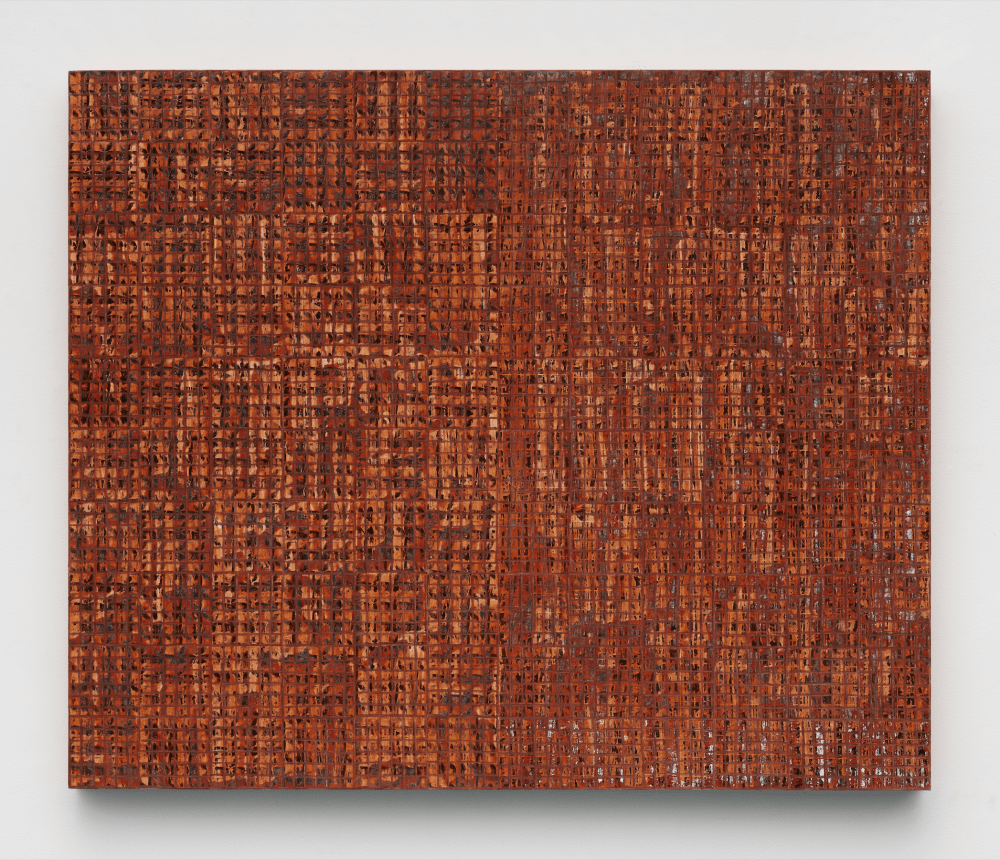
McArthur Binion, Handmadeness:one, 2023
McArthur Binion’s new series of paintings, titled Handmadeness, delve fully into the lexicon of what Binion terms the under conscious: visual markers of his identity collaged in a repeating, interwoven grid. These images in the paintings’ ground layer span a range of sources, from the deeply personal and autobiographical to the public and political. From the former category, Binion uses facsimiles of his birth certificate and his address book, as well as photographs of himself, his hand, and of his father and mother.
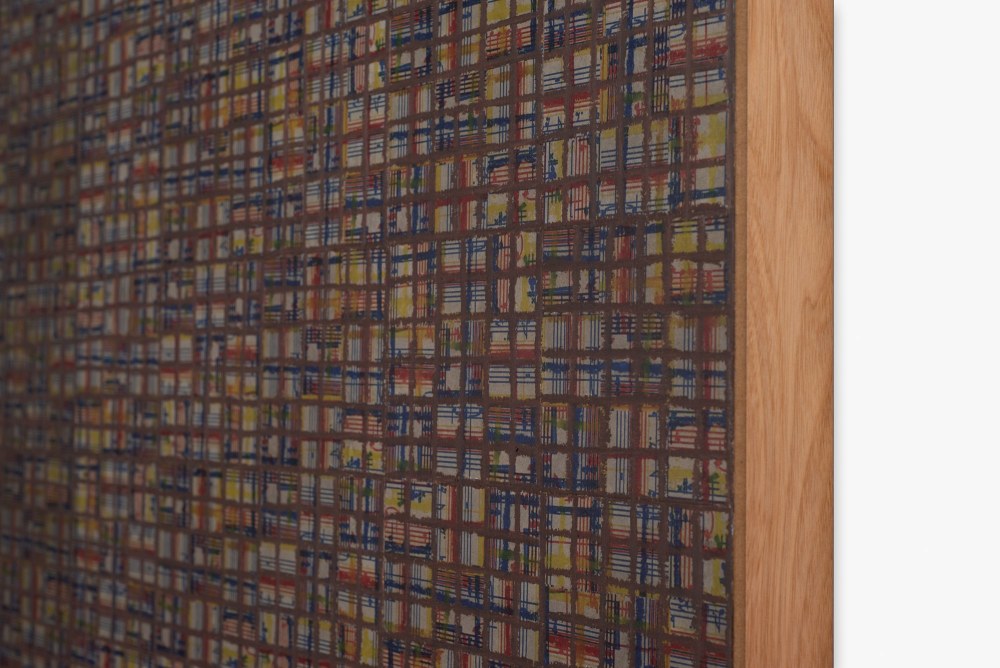
McArthur Binion, visual:ear (detail), 2023
Discernible segments from a musical score Binion commissioned by the Pulitzer-prize winning composer and saxophonist Henry Threadgill point to the critical role that music and improvisation have played in Binion’s work. Of the latter category is a detail from a photograph published in a 1930s newspaper of a lynching in Marion, Indiana, the dissemination of which confronted the nation with the reality of racial violence. Customary to his practice, Binion obscures the under conscious with washes of ink in novel color combinations and a lattice-like layer in paint stick, the artist’s chosen materials since the 1970s.
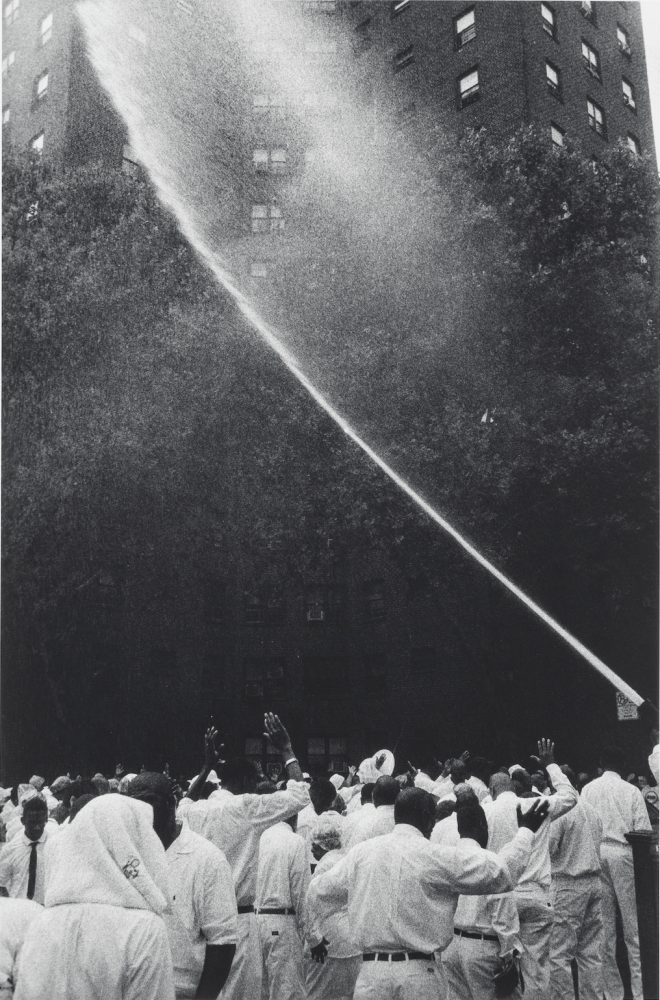
Jules Allen, Untitled, 2000
Me and You is the gallery’s second exhibition with McArthur Binion and the first show in Chicago to include the work of celebrated New York photographer Jules Allen. Allen studied photography under Jack Welpott, whose formalist leanings were rooted in the tradition of Ansel Adams and Edward Weston, and received a MS in clinical psychology to better understand the human subject. In 1978, Allen moved to New York, where he met Binion among a rich milieu of Black avant-garde musicians and artists. Allen pursued both studio and commercial work for clients including Def Jam Recordings, became a professor at Queensborough Community College, and participated in the Kamoinge Workshop, all as he honed his vision in photographing Black urban life.
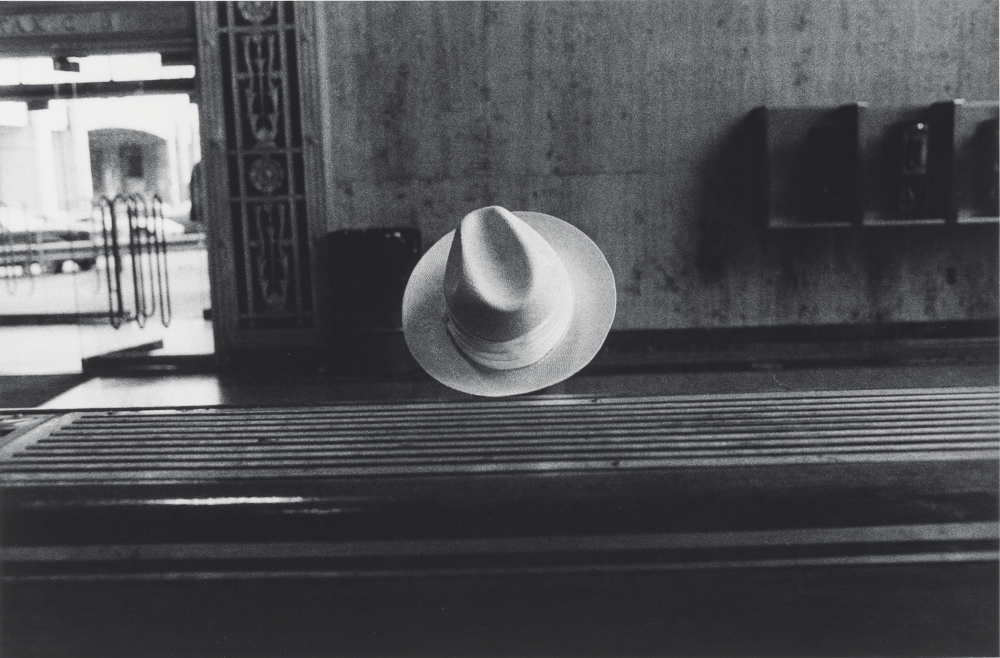
Jules Allen, Untitled, 1985
Me and You surveys Allen’s gelatin silver prints from the 1980s to present, spanning bodies of work including Hats and Hat Nots, In Your Own Sweet Way, and Rhythmology. The photographs reference a lineage that includes Romare Bearden, Henri Cartier Bresson, Robert Frank, Beuford Smith, and Roy DeCarava, with whom Allen also studied. Allen’s keen sense of formal elements such as light, line, and tonality, are used in combination with personal insight and empathy to create a communal portrait across scenes like a street baptism in Harlem, a woman waiting for the subway, teenagers working out on the street, and a line of police behind a single, elderly protestor.
The exhibition is accompanied by a fully illustrated catalogue, with a dialogue between McArthur Binion and Jules Allen and an introduction by Dr. Thulani Davis.
IN DIALOGUE
McArthur Binion and Jules Allen
On the occasion of the exhibition McArthur Binion and Jules Allen: Me and You at GRAY, the artists converse about their shared history and friendship. In this lively dialogue, Binion and Allen discuss their visual and musical influences, meeting in what Binion calls “the second-generation Black avant-garde” of 1980s New York City, and the singular practice each artist developed through a life-long dedication to his respective medium.
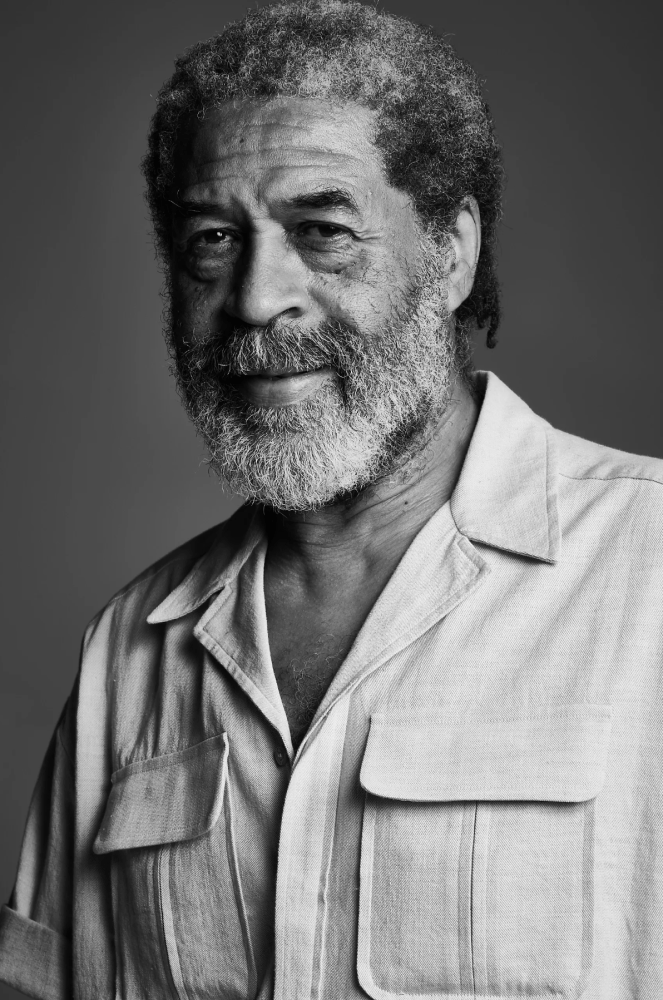
McArthur Binion
Credit: Pasquale Abbatista, Milan
McArthur Binion creates highly personal and labor-intensive works that assert his unique position which fuses the hallmark aesthetics of minimalism and abstraction with the artist’s own emotional content. Binion employs elemental materials including oil-based paint sticks, ink, and graphite to create dense interlacing grids on the surface of his paintings. This, as the artist puts it, “handmade geometry” is applied to a ground layer of neatly tiled images (reproductions of personal photographs and documents) that offer glimpses into his life: his birth certificate from Mississippi, which includes the designation “colored,” a photo of the farmhouse where he was born, a passport-sized self-portrait, a musical score by Henry Threadgill commissioned by Binion, or pages from his address book, which capture formative years in New York among contemporaries including Brice Marden, Dan Flavin, and Jack Whitten. Highly influenced by poetry and bebop jazz, Binion swings between improvisation and order, Abstraction and biography. His works refuse easy categorization, continuously shifting between a critique and an acceptance of the minimalist aesthetic, ultimately rooting the works in a dedication revelatory process of painting itself.
Binion received his Bachelor of Fine Arts from Wayne State University, MI, in 1971 and a Master of Fine Arts from the Cranbrook Academy of Art, MI, in 1973. His work has been featured in major solo and group exhibitions at institutions including the Frist Art Museum, Nashville, TN; Phillips Collection, Washington, DC (2023-24); The Museum of Fine Arts, Houston, TX (2024); Institute of Contemporary Art, Miami, FL (2022); Museo Novecento, Florence, Italy (2020–21); Museum of the African Diaspora, San Francisco, CA (2019); Institute of Contemporary Art, Boston, MA (2019–21); Smart Museum of Art, University of Chicago, IL (2018); Cranbrook Art Museum, Bloomfield Hills, MI (2018–19); Studio Museum in Harlem, NY (2016–17); and Contemporary Arts Museum Houston, TX (2012), among others. His paintings were featured prominently in the 57th Venice Biennale, VIVA ARTE VIVA (2017).
Public collections include the Addison Gallery of American Art, Andover, MA; the Art Institute of Chicago, IL; Crystal Bridges Museum of American Art and the Art Bridges Foundation, Bentonville, AR; Cranbrook Art Museum, Bloomfield Hills, MI; Denver Art Museum, CO; Detroit Institute of Art, MI; Institute of Contemporary Art, Boston, MA; Institute of Contemporary Art, Miami, FL; Kemper Museum of Art, Kansas City, MO; Morehouse College, Atlanta, GA; New Orleans Museum of Art, LA; Phillips Collection, Washington, DC; San Francisco Museum of Modern Art, CA; Smithsonian National Museum of African American History and Culture, Washington, DC; and the Solomon R. Guggenheim Museum, Studio Museum in Harlem, Metropolitan Museum of Art, and Whitney Museum of American Art, New York, NY, among others.
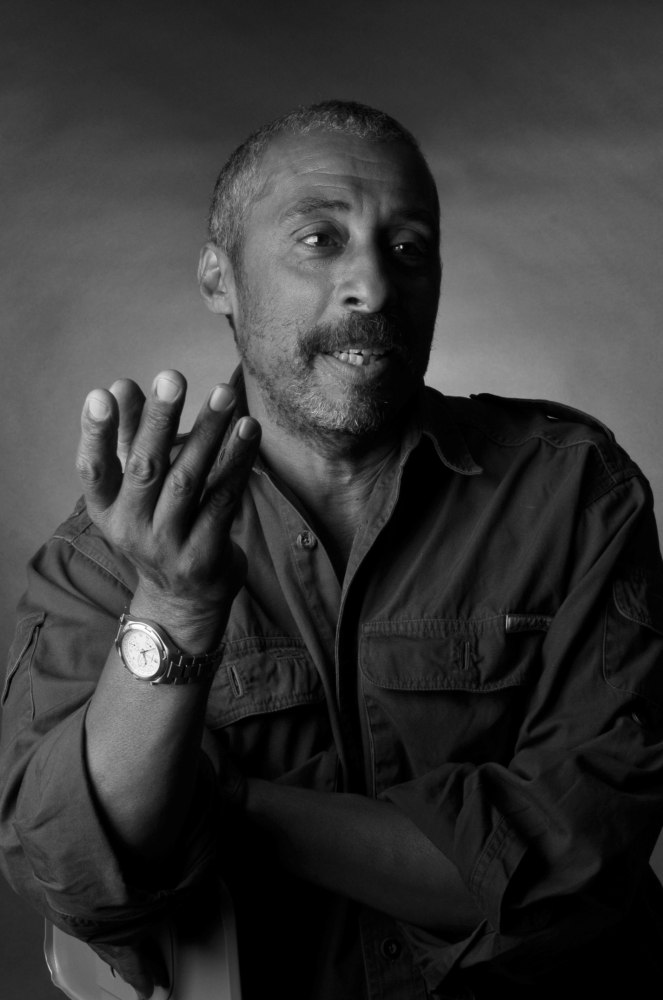
Jules Allen, 2009
Jules Allen is an award-winning photographer who creates reality-based images as well as metaphorical documents of which the primary foundation is grounded in behavior, enlightenment, and irony. His photographs express the essential truth that a culture’s power is clearest when presented on its own terms, and, thus, they are evocative of the contemporary American experience. Allen’s images place subjects drawn from the richness of urban black life within universal paradigms.
Allen attended California State University in San Francisco, where he studied photography with Jack Welpott. Jules Allen obtained a Bachelor of Fine Arts in 1973 and a Master of Science in Clinical Counseling Psychology in 1975, the latter a conscious choice to facilitate his understanding of human behavior. Moving to New York in 1978, Allen worked as a commercial photographer in editorial, advertising, and entertainment, while actively pursuing the development of a personal vision. His early influences in photography include Edward Weston, Henri Cartier-Bresson, and Robert Frank, as well as Roy DeCarava, his teacher at Hunter College, where Allen obtained a Master of Fine Arts in 1985.
Jules Allen has widely exhibited his work in the United States and abroad, and his photographs are held in museum and private collections, including the Museum of Modern Art, New York; the Studio Museum in Harlem; Brooklyn Museum of Art, New York; Smithsonian American Art Museum and National Gallery of Art, Washington, D.C.; Schomburg Center for Research in Black Culture, New York; and others. Allen is a Distinguished Professor Emeritus in the Department of Art and Design at Queensborough College. In collaboration with QCC Art Gallery Press, he has published six books: Black Bodies (2002), Double Up (2011), In Your Own Sweet Way (2013), Marching Bands (2016), Good Looking Out (2020), and The Hats or Hat Nots (2022). He is currently working on a body of work titled Rhythmology.